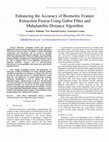Papers by Loserian Laizer

Performing transactions using mobile devices is increasing rapidly in developing countries, Tanza... more Performing transactions using mobile devices is increasing rapidly in developing countries, Tanzania inclusive. USSD and SMS are among the technologies widely used in conducting mobile transactions. These two technologies have their strengths and weaknesses from perspectives of security of systems. They both utilize GSM Services and GSM Security is known to have inherent flaws in its encryption and au thentication algorithms. A description for these platforms is given in this paper of what they are, their modes of operations, and an evaluation of thei r security as related to mobile banking systems. From the evaluations made; this paper suggests a method that is more secure for use in mobile banking systems. As a solution we propose some security features being added to the existing systems in order to improve data confidentiality, message integrit y and user authenticity. The suggestions are based on the capabilities for the technology to accommodate these additional features to protect data that will supplement the protection offered by the GSM.
19世纪中后期,为了加强对股东权利的保护,制约公司管理层滥用管理权,并平衡股东与董事会的权利,英美两国在衡平法上首创了股东派生诉讼制度.股东派生诉讼是指公司的正当权益受到他人侵害时,股东以自己名... more 19世纪中后期,为了加强对股东权利的保护,制约公司管理层滥用管理权,并平衡股东与董事会的权利,英美两国在衡平法上首创了股东派生诉讼制度.股东派生诉讼是指公司的正当权益受到他人侵害时,股东以自己名义为公司利益对侵害人提起诉讼,追究其法律责任的制度.①它的建立和完善同20世纪公司法倡导股东地位平等和强调公司少数股东利益保护的思潮密切相关.

Biometric recognition systems have advanced significantly in the last decade and their use in spe... more Biometric recognition systems have advanced significantly in the last decade and their use in specific applications will increase in the near future. The ability to conduct meaningful comparisons and assessments will be crucial to successful deployment and increasing biometric adoption. The best modality used as unimodal biometric systems are unable to fully address the problem of higher recognition rate. Multimodal biometric systems are able to mitigate some of the limitations encountered in unimodal biometric systems, such as non-universality, distinctiveness, non-acceptability, noisy sensor data, spoof attacks, and performance. More reliable recognition accuracy and performance are achievable as different modalities were being combined together and different algorithms or techniques were being used. The work presented in this paper focuses on a bimodal biometric system using face and fingerprint. An image enhancement technique (histogram equalization) is used to enhance the face ...

This paper explores the factors that influence the implementation of m-learning and proposes a mo... more This paper explores the factors that influence the implementation of m-learning and proposes a model for implementing mlearning in Tanzania. The study was conducted in ten secondary schools in the Kilimanjaro region in Tanzania. Purposive and convenience sampling techniques were used to determine students majoring in science subjects. Findings in dicate that majority of students own mobile phones and have access to the Internet connectivity. However, m-learning platforms that are currently in place are not viable solution in all contexts and not necessarily the best solution. Therefore, the design of m-learning content should focus on learning profile and personal needs such as location and affordability. A framework that considers four factors: user satisfaction, pedagogy, technology, and economy of use are proposed for Tanzanian context. It is concluded that education stakeholders should consider the opportunities of technology in education in order to boost knowledge sharing amon...

2013 Pan African International Conference on Information Science Computing and Telecommunications, Jul 1, 2013
This paper explores the factors that influence the implementation of m-learning and proposes a mo... more This paper explores the factors that influence the implementation of m-learning and proposes a model for implementing m-learning in Tanzania. The study was conducted in ten secondary schools in the Kilimanjaro region in Tanzania. Purposive and convenience sampling techniques were used to determine students majoring in science subjects. Findings indicate that majority of students own mobile phones and have access to the Internet connectivity. However, m-learning platforms that are currently in place are not viable solution in all contexts and not necessarily the best solution. Therefore, the design of m-learning content should focus on learning profile and personal needs such as location and affordability. A framework that considers four factors: user satisfaction, pedagogy, technology, and economy of use are proposed for Tanzanian context. It is concluded that education stakeholders should consider the opportunities of technology in education in order to boost knowledge sharing among students.

Journal of Information Knowledge Management, Oct 31, 2013
In this paper we developed security architecture for the higher learning institutions in Tanzania... more In this paper we developed security architecture for the higher learning institutions in Tanzania which considers security measures to be taken at different level of the higher learning institutions' data warehouse architecture. The primary objectives of the study was to identify security requirements of the higher learning institutions data warehouses and then study the existing security systems in and finally develop and architecture based on the requirements extracted from the study. The study was carried at three different universities in Tanzania by carrying out interviews, study of the existing systems in respective institutions and a literature review of the existing data warehouses systems and architectures. The result was the security requirements identified which lead to the development of the security architecture comprising security in source systems, data, and services to be offered by the DW, applications which use DW, networks and other physical infrastructure focusing on security controls like authentication, role-based access control, role separation of privileged users, storage of data, secure transfer of data, protective monitoring/ intrusion detection, penetration testing, trusted/secure endpoints and physical protection.










Uploads
Papers by Loserian Laizer